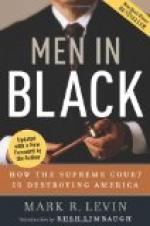“Why,” asks the juryman, “didn’t the defendant give back the goods if they were not what she wanted?” Both lawyers are on their feet. There is a mute appeal to the court; both sides are afraid to object to the question for they think the juryman may have a prejudice if he were stopped. The judge usually comes to the rescue and tells the juryman that he is sorry, but that his question is manifestly improper in form. The evidence should be whether the defendant did a certain thing or did not do it. The reason why he did it is not in point. After two or three attempts of this kind the juryman subsides and sits patiently through the trial without any suggestion. He thinks that there is a hopelessly complicated game being played before him and he does not attempt to interfere.
There may be some truth in the theory of the attorney who says:
“Always look out for the juryman who asks your witness questions. He is against you. If he absolutely believed the witness he would let it pass without questioning.” This reasoning may be used as an argument either way, for if the juryman believes the witness he may feel that he should like to have him tell more. Or if he does not accept him as truthful, he thinks it will not be worth while to ask him other questions. An inference may be drawn as to the juror’s attitude for and against.
An inexplicable thing to the jury is when the judge takes the case away from them and directs a verdict or dismissal of the complaint. That the jury should be compelled to listen to all that mass of testimony and then at the end not have a chance to decide is unreasonable. If the plaintiff did not have a case, why did the judge let them go on? He should have found it out earlier instead of wasting all that time.
After the whole case is in, it may happen that both sides move for a direction of the verdict and then the jury have nothing to do. The judge says:
“Gentlemen of the Jury, I direct you to find a verdict for so-and-so.” Before they have a chance to say whether they will or will not, the clerk announces a verdict for so-and-so. This is very annoying and discouraging, especially when the jury were going to find a verdict directly contrary to the way the judge decided. Technically they have a right to refuse to find a verdict as the judge directs, but if they did, only a mis-trial would result.
It is an illustration of the difference between the function of a judge and a jury. The jury pass on the facts, the judge on the law. When the judge dismisses the case, he is saying that the facts may be so and what happened may be truly stated, but even then it does not make any difference. The law is that those facts do not make out a case. Only when the facts make out a case do the jury have any function. Then it is for them to find out whether the facts are as the plaintiff claims them to be or as the defendant. The jury are usually puzzled and do not understand the distinction. In certain cases the judge determines both the facts and the law and decides the whole matter. In those cases, and in what is known as equity, there are no jury, but a judge may always ask for a jury if he wishes one to determine the facts.




